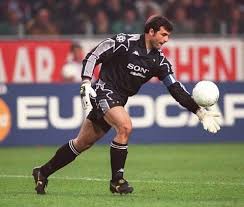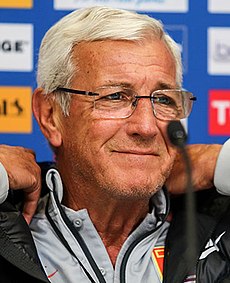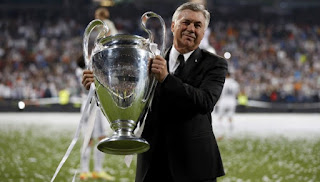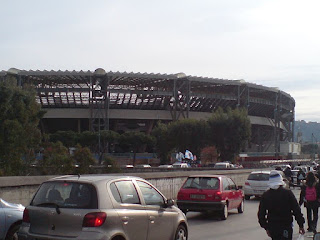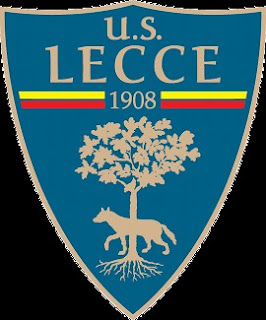Understated midfielder who helped AC Milan win six Serie A titles
The footballer and coach Roberto Donadoni, who was a key figure in an AC Milan side that dominated Italian football for the best part of a decade, was born on this day in 1963 in Cisano Bergamasco in Lombardy.
Roberto Donadoni is now a coach after
a hugely successful playing career
A winger or midfielder famed for his ability to create goalscoring opportunities for his team-mates, Donadoni was once described by the brilliant French attacker Michel Platini as ‘the best Italian footballer of the 1990s’.
His collection of 21 winner’s medals includes six for winning the Serie A title with AC Milan and three for the European Cup or Champions League.
He was also part of the Italian national team that reached the final of the World Cup in 1994, losing to Brazil on penalties.
Donadoni was never a prolific goalscorer: in more than 500 league and international matches, he found the net only 34 times. Yet he had exceptional technical ability and great passing skills and if tallies of ‘assists’ in matches had been recorded during his career as they are now, the role he played in Milan’s success in particular would be appreciated still more.
Since ending his career as a player, Donadoni has totted up 450 matches as a coach, taking charge at seven clubs in Italian football and one in China, as well as having a stint as head coach of the national team. Although he led the Azzurri to the quarter-finals of Euro 2008, he has yet to win a trophy as a coach.
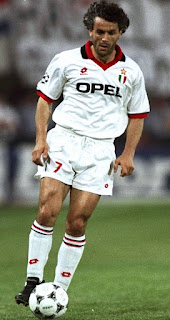 |
| Donadoni won six Serie A titles with AC Milan |
Two years later, in 1984, he helped Atalanta return to Serie A after an absence of five seasons, as Serie B champions. His youthful talent did not go unnoticed and in 1986 he moved to AC Milan, one of the first signings made following Silvio Berlusconi’s takeover of the club.
It was not long before he was playing in front of defenders such as Franco Baresi, Paolo Maldini and Mauro Tassotti and behind strikers of the calibre of Marco van Basten, Ruud Gullit and George Weah as the Milan teams coached by Arrigo Sacchi and Fabio Capello swept all before them.
He was part of the team that Sacchi led to the 1987-88 Serie A title, Milan’s first for nine years, which went on to win the European Cup in 1989 and 1990, the first team to retain the trophy since Nottingham Forest a decade earlier.
Under Capello, who succeeded Sacchi when the latter was appointed to coach the national team, Donadoni won four scudetti - the scudetto being the shield-shaped badge worn on the shirts of the reigning champions - in the space of five seasons, as well as another European Cup, by then rebranded as the Champions League, in 1994.
 |
| Donadoni has gained respect as a coach, although he has yet to enjoy tangible success |
Regarded as the most dedicated and selfless of players, he was once quoted as saying that his greatest satisfaction on the football field came from “making the pass that leads to the goal”.
In his international career, Donadoni made his senior debut for the Azzurri in 1986 and was a key member of the team that finished third in the 1990 World Cup on home soil under Azeglio Vicini, although the tournament was marred for him by missing one of Italy’s penalties in the shoot-out that determined their semi-final against Argentina, which was won by the South American side.
He went one better in the 1994 World Cup in the United States. Reunited with his former Milan coach Sacchi, he helped the Italians reach the final in Pasadena, but was again on the losing side after a penalty shoot-out, with Brazil taking the prize. This time, Donadoni was spared the responsibility of taking one of the kicks.
He retired for good in 2000, having helped Al-Ittihad win the Saudi Premier League title.
Since then he has built a second career as a coach. Following the traditional Italian route of working his way up through the lower divisions, Donadoni took his first coaching job with Lecco - just 15km (nine miles) north of his hometown of Cisano Bergamasco - and has since had another nine coaching contracts with eight clubs, as well as a two-year spell as head coach of the national team.
He was sacked as Azzurri coach after Italy’s disappointing performance at Euro 2008 and had the misfortune to be in charge at Parma as the once highly-successful club plunged towards bankruptcy for a second time in 2015, when he was applauded for sticking by his players - unsuccessfully, in the end - as they battled to avoid relegation from Serie A, despite going unpaid for a year.
Travel tip:
The new church of San Zenone in
Cisano Bergamasco
The small town of Cisano Bergamasco is in the San Martino valley, which straddles the provinces of Lecco, 15km (nine miles) to the north, and Bergamo, 20km (12 miles) to the southeast. It is also close to the lakeside city of Como, some 40km (25 miles) to the west. Although there has been a settlement in the area since Roman times, and some remains of the medieval Vimercati-Sozzi Castle are preserved within the grounds of a private villa, the Cisano Bergamasco of today is typical of the pleasant, well-maintained municipalities to be found in much of northern Italy.
Travel tip:
Lecco sits alongside the beautiful Lago
di Lecco, the eastern fork of Lake Como
Lecco, where Roberto Donadoni took his first steps in coaching, lies at the end of the south eastern branch of Lago di Como, which is known as Lago di Lecco. The Bergamo Alps rise to the north and east of the lake. The writer Alessandro Manzoni lived in Lecco for part of his life and based his famous novel, I promessi sposi, there.
Also on this day:
1908: The birth of writer Cesare Pavese
1918: The birth of former Italian president Oscar Luigi Scalfaro
1943: Allied troops land at Salerno, south of Naples
1982: The birth of photographer and film director Francesco Carrozzini

